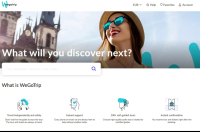From an idea to a product
Experts say that only around 10% of all startups become successful. Many think that their idea is unique and it can be stolen if presented too soon. However, often it takes a lot of effort, resources, time and money to turn a passive idea into something active.
At first, an idea is something of a hallucination that has nothing in common with reality: someone needs something that popped up in your head. Usually, a successful startup isn’t born out of nothing – it is often based on an already completed project, a remake of another product or on the already existing presales.
An idea has to be processed meticulously before it turns into a hypothesis. You have to decide who your clients are, who will pay for your idea, what are the potential drawbacks of the project and if there are any solutions, what exactly it is that you offer, and why clients will buy something from you and not someone else. The last question is probably the trickiest – it’s often hard to answer but potential clients and investors love to ask it. And they are always ready to tell you why no one will buy your product.

Such negotiations with potential clients are actually the best way to test a hypothesis. Sometimes we make a demo of a product and promote it over a sales or a pitch session. Thus, we can see the problems our clients face and whether our idea even fits their reality. It’s highly unlikely that anyone will listen to us if we come empty-handed.
At times, however, we cannot secure this kind of negotiations – and then we have to pay for the interview. It is especially widespread abroad. We had cases when we needed to spend money on enterprise specialists to test a hypothesis, and it is quite within the norm. It is said that you have to attend no fewer than 50 interviews before you can start working on your minimum viable product (MVP). It has to do with the mostly horizontal corporate structure in Russia meaning that you have to talk to every other level in the chain before you get to the head of the company.
Preparing a presentation

If you already have drafts of your proposal, you need to turn them into a presentation that you can show to your potential clients or investors.
People often think that you can only start talking to your clients after your product has taken its final form. It actually works vice versa. You can only test the relevance of your product based on the feedback you get.
You should start making your presentation by answering the question “Who is it meant for?”. Depending on your target audience, both the content and the message of your presentation will be different. For instance, an investor is not interested in the idea itself but in its subsequent monetization and sales growth rates. Clients, on the other hand, are interested in the applicability of the product, and how effectively it will solve their problems.
The second question to ask yourself is what is the aim of this presentation. Is it to sell the product, to attract an investor, or to test a new feature that you want to implement? It’s also important to identify the main message of your presentation: is it that the company is so great, that the product is useful, or that the business model is very well thought-through?
And the last question is the format your communication will take. Is it a face-to-face presentation, a pitch session with a lot of participants, or a mailout? These factors also impact your presentation.
But the main goal is to attract your target audience, deliver your message, and explain how your solution will resolve the problem of your potential client. Your success at this stage is determined by whether you manage to catch your listeners’ attention and secure another meeting.
Pitch Deck

Pitch Deck is a series of slides that allows us to tell about our product or idea, and attract our audience.
It has to be simple, concise and convincing. Don’t overcomplicate the slides with great amounts of text, or detailed plots. Your audience can always ask you additional questions if they get interested in a particular aspect.
It is crucial for pitch sessions where your presentation time is strictly limited and you often have around five minutes. Rehearse your speech and make sure you fit into this allotted time.
Don’t stress the unique features of your product too much. For experienced investors, this can just mean that you haven’t done your research well enough or that your product is potentially a failure (if there are no competitors, there’s no market). It’s often said these days that there’s nothing unique. And even if you do copy a product at the start, by the end it will acquire a number of special features that will turn it into something completely new.
Don’t expect your audience to make their decisions at once, give them time to think. The best outcome of a presentation is a plan for another meeting. And pay attention to the feedback you get – it is what you came for, as it can give you insight into how you can further develop your product. Negative feedback can be a sign that your hypothesis is wrong and you shouldn’t waste your time on it.
The structure of your presentation

There are seven key topics you need to cover in your presentation, each of which should fit on no more than one slide.
- The first one is your consumer and the problem that they might have.
Here you can say a couple of words about how this problem is solved now, and explain the drawbacks of existing solutions.
- Next comes your own solution.
You have to demonstrate how your product helps with the problem, what are its benefits and unique qualities. It is here that you talk about how you have outdone your competitors.
- The third slide explains your technology: how and why your product works, what methods are applied, and how users interact with it.
It’s best to show it with a scheme or a picture.
- The next step is your market research – the crucial aspect when negotiating with investors or business incubators.
This is where you show your understanding of the product and your idea. All of your data should be supported with statistics, reliable sources and links.

- Another topic to cover can be called “the result”.
Any of your achievements, even small ones, go here: your first sales, preliminary agreements, presales and tests, the number of active users etc. Here you can also list the investments you’ve attracted.
- Yet another slide is meant to present your team.
Many overlook this step but often the people you work with can lead you to potential clients, partners or investors. If you take part in an accelerating program, definitely list your mentors – they usually enjoy a lot of respect and will raise the level of trust in your audience. Each key member of your team should have a picture and a description of their input into the product along with their relevant experience.
- Finally, you should give both a summary and a call to action.
Here, you briefly cover the main points of your presentation, show why it is beneficial to collaborate with you, how to contact you and what it is that you want your audience to do. You can also list the exact investments you require and how you plan to spend them.
How to tell that your presentation went well?

One obvious marker is, of course, a sale or a preliminary agreement. If none of that happens, however, it doesn’t mean that your presentation failed. First, you might have interested your clients, partners or investors enough to set up another meeting. You can prepare everything more carefully for that one, and have a chance to discuss everything in detail. Second, you can get valuable connections that can potentially lead you to your next client. Third, even if you think that you gained nothing from it, you have actually received useful information in the form of feedback. You can use it to either modify your product to make it more interesting and relevant on the market, or drop a failed idea, saving your time, money and effort.
The full lecture (in Russian) is available on the official Career Services Center page.





